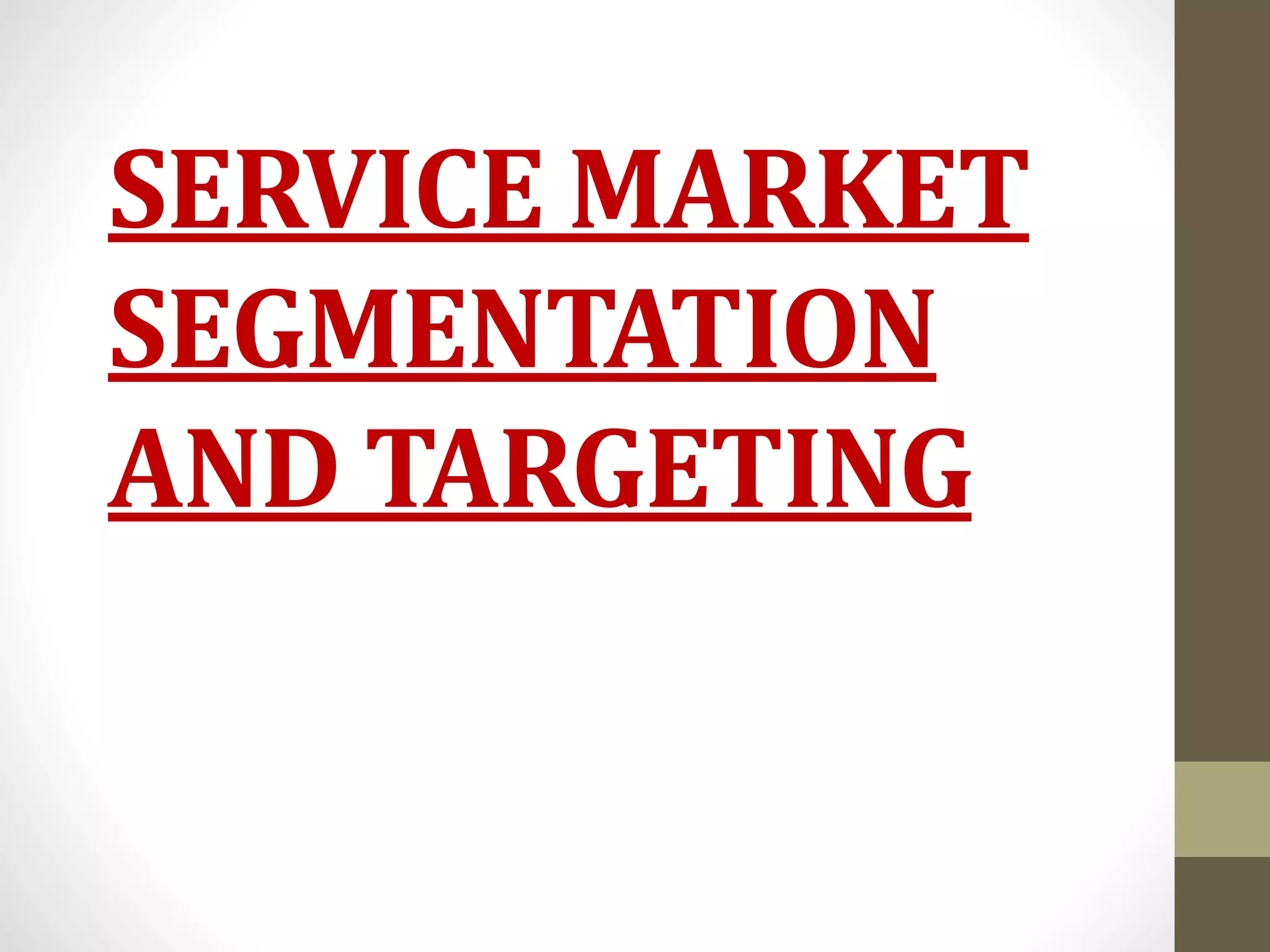1. Segmentation, targeting, and positioning are strategic marketing fundamentals used to generate competitive advantage and business opportunities. Segmentation involves dividing the market into distinct groups that share common characteristics, needs, behaviors, or patterns.
2. There are four types of service organizations based on their service focus and market focus: unfocused, service focused, market focused, and fully focused. Market segmentation recognizes the need for specialization to suit market segments rather than trying to be all things to all people.
3. Market segmentation leads to more efficient resource utilization, improved market manageability by dividing into smaller parts, and an enhanced ability to satisfy customers. The objectives of segmentation are to identify similarities and differences between buyer needs in segments











